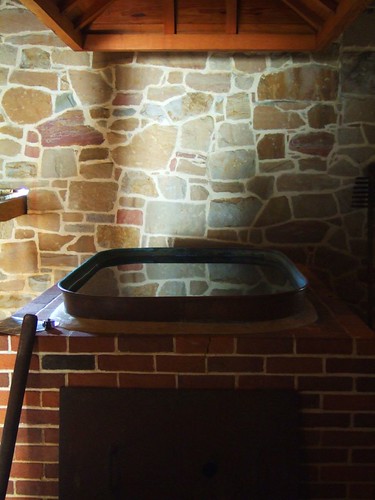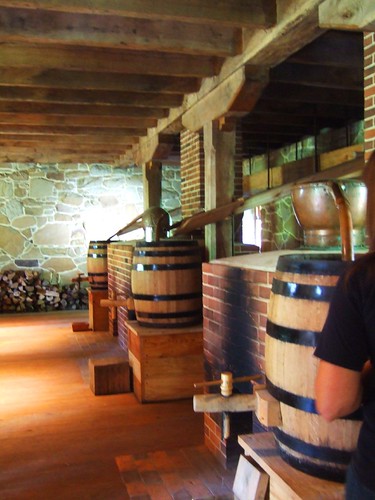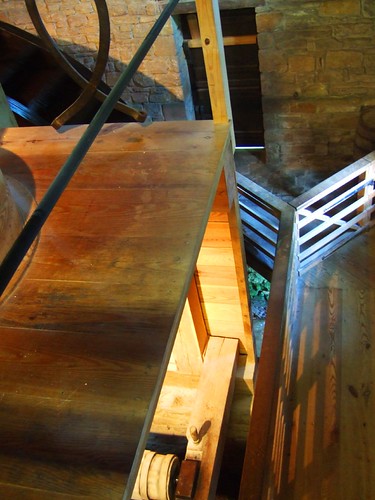
A few weekends ago, I was awarded Best in Show at the Havemeyer Sugar Sweets Festival, a fundraiser for the City Reliquary. I was especially proud of my prize because the recipe that won, Chocolate Puffs, is one of my favorite creations.
I first came across the recipe for Chocolate Puffs in The American History Cookbook, an excellent resource by Mark H. Zanger that uses food to teach cultural history. That’s right up my alley.
The recipe, which is from a 1750s manuscript, is fascinating because it is “one of the first recipes in English for any use of chocolate other than drinking.”
Take a pound of Loaf Sugar, beat and Sifted very fine, 2 Ounce of Almonds blancht and beat very fine with a little Orange Flower water or any other, to keep them from Oyling, but not to make the same too thin, take 2 ounces of Chocolet and grate it, then mix it well together, the take the wfite of an Egg and beat it to a froth, if one be not Enough take a little more, then beat it well to a paste & Squert it, and do it on Slight paper and Set the same in an oven after Bread, of Chocolett Ditt it up a while but not for White ones, for fear of making them brown.
I realized this recipe was the perfect vehicle to try out the block of American Heritage baking chocolateI had picked up on my recent trip to Washington DC. American Heritage is chocolate produced by the Historic Division of Mars, Inc.
“The Historic Division of Mars was established in 2006, with the vision of becoming the undisputed leader in chocolate history. Our mission is to relentlessly pursue and share chocolate’s rich past, by creating authentically historic chocolate experiences that allow our consumers to enjoy the fusion of chocolate history and Mars Chocolate excellence.
 It’s “Handcrafted chocolate made from an authentic colonial recipe…available during the 17th century.” I’m a huge nerd, so when I discovered that there was an authentic historic chocolate being produced, I was beside myself with excitement.
It’s “Handcrafted chocolate made from an authentic colonial recipe…available during the 17th century.” I’m a huge nerd, so when I discovered that there was an authentic historic chocolate being produced, I was beside myself with excitement.
Early chocolate was produced sweetened cakes and sold as a spice. Until the later half of the 19th century, it was primary served as what we know of as hot chocolate. My block of American Heritage chocolate is about 5 oz of pressed cocoa, delicately spiced with anise, red pepper, nutmeg, orange and cinnamon. It seemed only fitting to feature the unique taste of this chunk of chocolate history in my recipe for Chocolet Puffs.
If I’m reading the Chocolet Puffs recipe correctly, it gives you an option of melting the chocolate before adding it to the whipped egg whites, but primarily advises you to simply grate it and stir it in to the meringue, much like you would use a spice. I searched for a comparable modern recipe to use as a jumping point for my baking process: I came across a wonderful recipe for Chocolate Meringues in Martha Stewart’s Cookies that stirred shaved chocolate into a Swiss meringue; a concept incredibly similar to my 18th century recipe.
***
Chocolate Puffs (1750s)
From a manuscript housed at Tyron Place, as published in the American History Cookbook.
Martha Stewart’s Cookie Book.
1 cup sugar
Pinch of cream of tartar
Pinch of Salt
1/2 tablespoon Orange Flower Water*
1/4 cup grated American Heritage chocolate
1. Preheat oven to 175 degrees. Combine egg whites, sugar, cream of tartar, salt and orange flower water in a heat proof bowl of an electric mixer. Set in a double boiler. Cook on a low heat, whisking constantly, until the sugar has dissolved and the mixture is warm to the touch.
2. Transfer bowl to electric mixer fitted with a whisk attachment; beat starting on low speed and gradually increasing to high, until stiff, glossy peaks form, about 10 minutes.
3. Gently fold in chocolate, taking care not to crush the meringue.
4. Transfer meringue to a pastry bag, or (like I did) a Ziploc bag with one corner cut off. Pipe quarter sized, “kiss” shaped cookies onto a non-stick cookie sheet, or parchment lined cookie sheet.
5. Bake cookies for two hours.
*Orange Flower Water can be found in Middle Eastern grocery stores; I live in an ethic neighborhood, so my local grocery store carries it, along with three different brands of Rose Water. It is a historic gastronomist’s paradise.
***
And that’s all there is to it. The process is time consuming, but simple. The results: a depth and intensity of flavor I would not have thought possible from these crispy, sweet little puffs.




